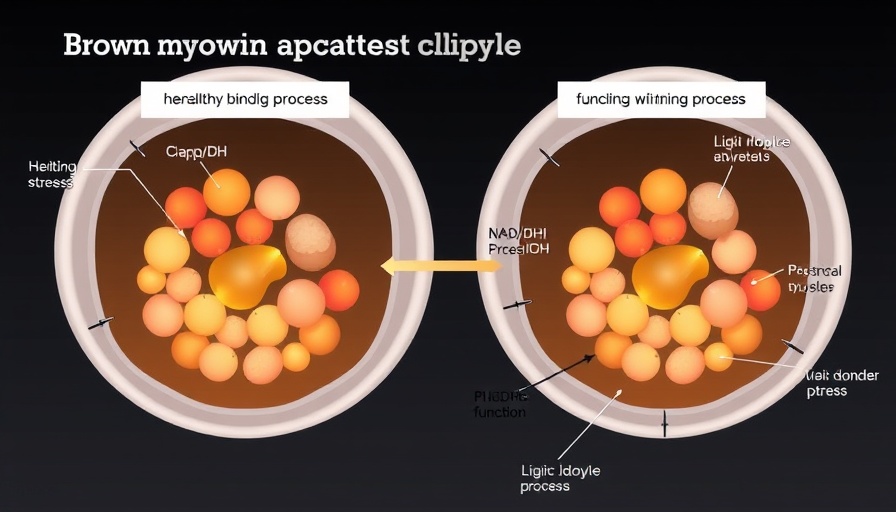
Unraveling the Mystery of Brown Adipose Tissue
In recent years, the role of brown adipose tissue (BAT) in energy metabolism has gained significant attention, especially concerning its whitening—a process linked to age and obesity. A fascinating study by Kaul and colleagues has made strides in understanding how mitochondrial stress in BAT influences nuclear mechanics. This intricate connection highlights not just the biology of fat cells but opens windows into the broader discussion on how epigenetics plays a role in metabolic health.
The Whys and How of BAT Whitening
Why should we care about BAT whitening? Simply put, bathed in the complexity of cell biology, this phenomenon can influence body metabolism and the aging process. As BAT undergoes whitening, it shifts from being a calorie-burning powerhouse to a more energy-storing state—a change often tied to rising obesity rates. This transition further complicates the pathways that govern our body's energy utilization, making keeping tabs on BAT health a vital aspect of any longevity strategy.
Historical Context: What Is BAT?
To understand the current findings, let’s take a quick trip down memory lane. Brown adipose tissue has historically been categorized as the good fat—responsible for generating heat and burning calories. Unlike white adipose tissue, which stores energy, BAT’s metabolism is thought to be a significant player in maintaining a healthy weight and enhancing endurance. This duality of fat types is paramount when discussing health and longevity.
Current Insights: The Role of Mitochondria
As research progresses, we see mitochondria—often described as the powerhouse of the cell—taking center stage. They not only produce energy but are deeply intertwined with the health of BAT. The recent study links mitochondrial stress and epigenetic alterations directly influencing BAT function and behavior. In essence, when the mitochondria in BAT are stressed, they contribute to the cellular “whitening” process, marking a significant intersection of biology and metabolic health.
Future Predictions: What Lies Ahead for BAT Research?
Looking ahead, the implications of understanding BAT whitening could reshape our approaches to obesity and metabolic disorders. It raises critical questions: Can we manipulate mitochondrial health to enhance BAT function? Will future therapies focus on maintaining the 'brownness' of fat rather than simply reducing overall fat? Armed with this knowledge, we might be able to leverage biohacking strategies that not only help mitigate obesity but also optimize overall healthspan.
Personalized Health Strategies: Targeting BAT for Longevity
For the health-conscious individual, a personalized approach that considers mitochondrial health could be revolutionary. By integrating insights from this BAT research, individuals can focus on nutrition that supports mitochondrial function, such as supplements rich in antioxidants or adopting a diet high in healthy fats while minimizing processed sugars. These changes could enhance not only cellular health but longevity itself, creating a lifestyle conducive to vitality and longevity.
Debunking Myths: The Big Picture of FAT
One common misconception is that all body fat is detrimental to health. This couldn’t be further from the truth! Understanding the nuances between BAT and white fat reveals a more textured view of body composition. Embracing the benefits of healthy fat, including BAT, could be integral to optimizing health—promoting awareness of how crucial these tissues are in cardiovascular health and metabolic fitness.
Call to Action: Embrace Your Metabolism
As we conclude our exploration of BAT and its relationship with mitochondrial health and metabolic aging, remember that your journey toward optimization is within reach. Consider adjusting your dietary and lifestyle habits to align with the latest insights in cellular health. The quest for longevity is not just about extending life but enriching it—one informed choice at a time!
 Add Row
Add Row  Add
Add 




Write A Comment